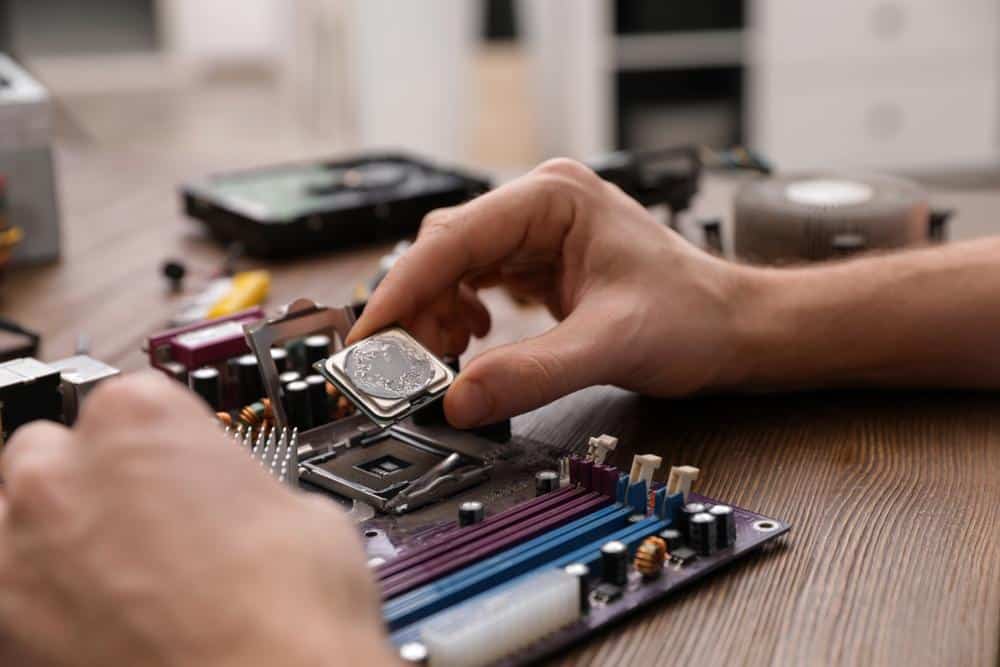So, you’ve just purchased a brand spankin’ new Windows laptop and you feel like nothing can stop you. But then you quickly learn that there’s more than a few pesky bugs and error messages that can slow you down. What’s frustrating it’s a new piece of hardware. This shouldn’t be happening.
Yet, every laptop’s operating system, no matter how new, is going to have its share of bugs. Windows 10 is no different. Luckily, most Windows errors are easy fixes. Read on for solutions to some of the most common ones.

Updates That Won’t Install
Windows 10’s operating system is a real go-getter when it comes to making new updates available. But as for installing those updates? Download speeds can be sluggish at times, and in some cases fail to install entirely.
This is usually fixed by freeing up space. Start by downloading CleanMyPC, a free software that scans your computer for idle files you can uninstall.
Free up even more space by using Windows’s built-in “Disk Cleanup” feature. You can access Disk Cleanup by:
- Click the “Start Menu” and select “All Programs”
- Click “Accessories,” then “System Tools,” then “Disk Cleanup”
- This brings up a panel labeled Files to Delete. You can click one at a time to review each file, then right click to uninstall the ones you don’t need
You can also try other software like CCleaner or PrivaZer.
Slow Boot Times
Some Windows users have complained about slow performance speeds right off the bat when they first power their computer on. If your computer has slow boot times, try the following:
- Run a Scan with Windows Defender– Often, slow boot times are the result of a computer infected by malware. To run a full scan for malware, open the built-in anti-malware tool Windows Defender by simultaneously pressing the “Windows key” and “I,” then clicking “Updates and Security,” then “Windows Defender.”
- Check for Updates – While you have that Updates and Security option open, check for new available updates.
Update and/or Clean Your Computer’s BIOS
Whenever you power on your computer, the first thing to load is its Basic Input/Output System, or BIOS. Slow boot times are sometimes caused by your BIOS needing either updating or cleaning, so knowing how to enter BIOS on Windows 10 is crucial.
You can enter your computer’s BIOS one of two ways:
- Press the Hotkey – The good news is that every Windows laptop has a very brief window (no pun intended)—in between powering on and loading the startup screen—when you can access the BIOS by pressing a designated “hotkey.” The bad news is that there was never a consensus with all the laptop manufacturers to settle on one universal hotkey. Look up the hotkey for the manufacturer of your laptop.
- Find it Through the Ole Start Menu – If you’re quick on the trigger, go through the Start Menu. Click “Settings,” then “Updates and Security,” then “Recovery,” followed by clicking “Restart Now,” then “Troubleshoot.”
Influx of Notifications
Windows 10 comes with a feature called Action Center, which conveniently organizes notifications about your apps in one place. But Action Center is programmed to update you on all of your apps, even the ones you never use. This makes messages pop up so frequently, it feels less like a helpful tool and more like a telemarketer that won’t stop calling.
You can fix this by:
- Opening the Start Menu and clicking “Settings.”
- Click “System,” then select “Notifications and Actions.”
- From there, you can use the toggle switches to decide how often you’d like notifications to pop up, if at all.

Restore System
Many loyal Windows users have found peace of mind over the years knowing that, were their computer to crash, they could easily recover any lost data with the System Restore feature. But for whatever reason, Windows 10 has it turned off by default.
To turn it back on:
- Type “system restore” into your search bar.
- Click “Create a Restore Point.”
- This will prompt a panel labeled System Properties. Click on “System Protection.”
- Select your C: drive and click “Configure.”
- A panel entitled “Turn on System Protection” will come up. Click the Radio button right next to it.
- Drag the slider somewhere between 5-10%.
Remember, before you try any of these fixes, back up your data and consider investing in an external hard drive.
A Few Clicks to Fix
Bugs and slowdowns on Windows can be annoying, but thankfully, quick and permanent fixes are rarely more than a few clicks away. Use the above tips to give your Windows computer and your user experience an instant upgrade.

